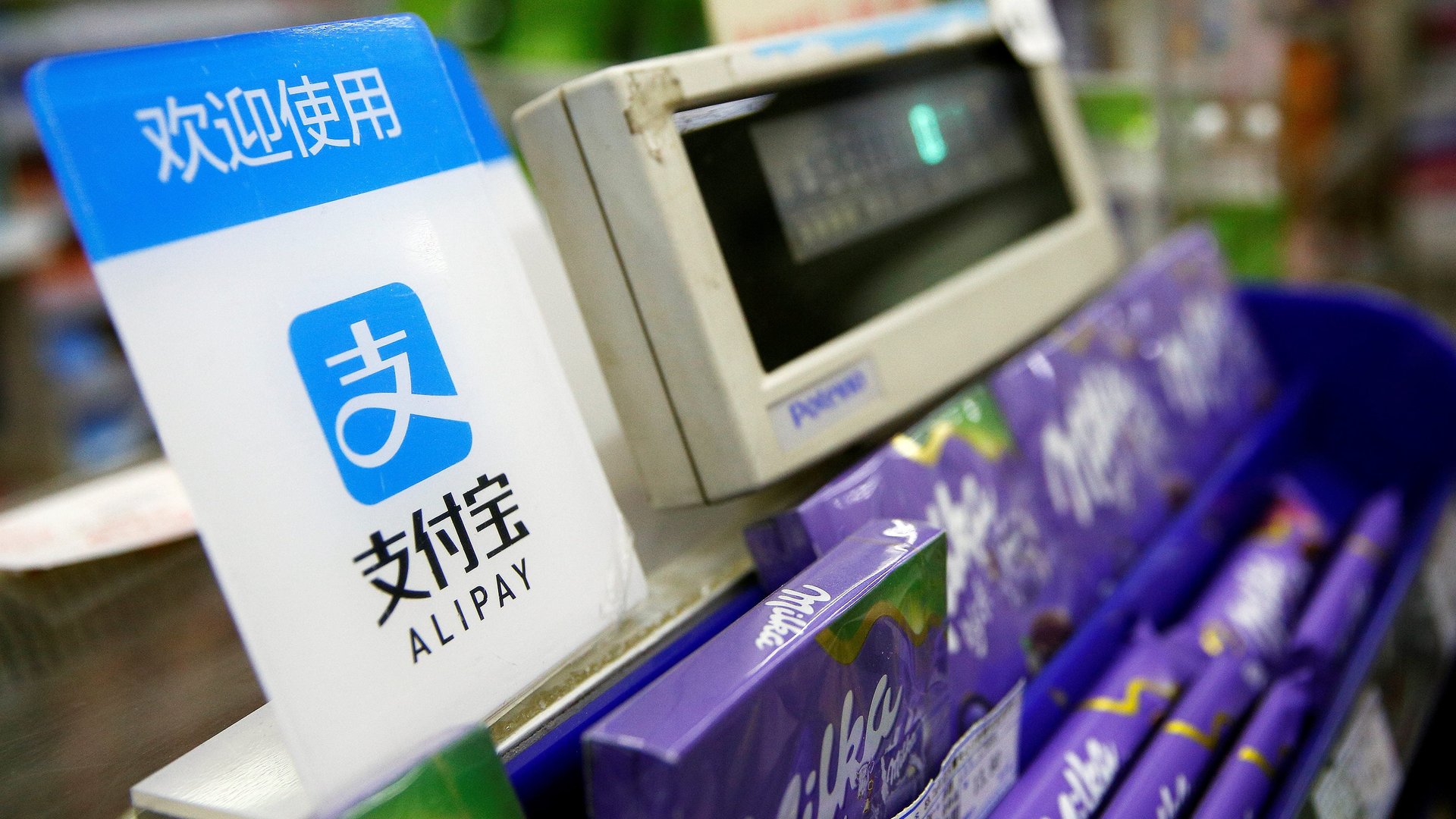Alipay tempts Europe’s retailers with Chinese tourists’ massive spending power
I’m sitting with Li Wang in a grand room in the Guildhall, the historic center of London’s financial district. Several floors below us are the preserved ruins of an ancient Roman amphitheater, built some time in the first century in the city of Londinium. The venue has been hired out for an annual fintech conference, the Innovate Finance Global Summit.


I’m sitting with Li Wang in a grand room in the Guildhall, the historic center of London’s financial district. Several floors below us are the preserved ruins of an ancient Roman amphitheater, built some time in the first century in the city of Londinium. The venue has been hired out for an annual fintech conference, the Innovate Finance Global Summit.
Wang runs Alipay, the mammoth payments firm spun out of Hangzhou-headquartered Alibaba, for Europe, the Middle East, and Africa. She gestures at the room. “As long as I have my phone with me, people in Hangzhou will be able to detect where I am with up to five square meters of accuracy,” she says. “They will know for sure that I am in this room, and not another room. Imagine this in a shopping mall. In any five square-meter space, we can tell you what promotions are around you.”
Wang is demonstrating the technological prowess of Alipay—and its global reach. Ant Financial, the firm that offers Alipay, brought the service to Europe two years ago with the modest goal of making it more convenient for Chinese tourists to shop at outlet malls and duty-free shops using a method they are familiar with.
A survey by Nielsen and Alipay (pdf) suggests that Chinese tourists are bothered by unfamiliar payment methods while abroad. After all, in mainland China today, almost no one pays for a meal, taxi, or new clothes with cash, or even a bank card. It’s all done through the camera lens of a smartphone, through Alipay or the rival payment service from Tencent.
Alipay has dropped any pretense of a small-time operation and is now ready to conquer Europe in earnest. The projections Wang reels off are dizzying. It aims to grow the number of merchants who accept it as a payment method by 15-fold within 12 months, and expects merchants in 20 European markets to accept Alipay transactions by next March. She’s doubling her team’s headcount—at a minimum—though she won’t say how big the team is now. She says transaction volumes in her region are growing at a rate of 50% per year, although she won’t provide detailed figures.
Alipay’s numbers in Europe are likely minuscule compared with its business in its home market. But the pace and ambition of its expansion abroad positions it for a bigger prize: serving non-Chinese customers. Martin Chorzempa, a research fellow specializing in Chinese fintech at the Peterson Institute for International Economics, a think tank, calls Alipay’s strategy of rapidly adding merchants to its network the “spearhead” of a plan to add non-Chinese customers. “Once you have one side of a two-sided market well covered, you have an enormous advantage,” he says.
The company’s strategy has always hinged on making it easier for mainland Chinese tourists to do their shopping abroad. The Chinese are tourism’s biggest commercial force, outspending their nearest competitor, Americans, by some distance. Chinese tourists spent $261 billion abroad in 2016 compared with Americans’ $122 billion foreign spending, according to the United Nations’ travel body. Alipay’s pitch to European merchants is access to a potential torrent of tourist spending. “We bring Chinese spending power to merchants on the ground in European markets,” Wang says.
Chinese travelers devote most of their spending in Europe to shopping, not on meals or hotels, according to a survey by Nielsen and Alipay. Chinese tourists spend a quarter of their budget while abroad on shopping, nearly double the amount of non-Chinese travelers.
And whereas Alipay used to target duty-free airport shops and outlet malls in Europe, now Wang talks about high-end luxury outlets. “In Paris, we have Galleries Lafayette, Gucci, Prada—we will work with famous retailers and bring Chinese traffic to them,” she says.
Wang is also broadening her target market. Instead of just mainland tourists at Harrods, she wants mainland Chinese students and expatriates to use Alipay as part of their daily routines. In the UK, for example, Alipay would want to work with pharmacy chain Boots to attract resident Chinese. “We see ourselves more like an infrastructure player,” she says.
But if there’s one thing that highlights the difference in European and Chinese technology markets, it’s people’s attitudes towards privacy. While the domestic Chinese internet has its traffic routed through a government-screened “Great Firewall,” Europe is on the cusp of introducing the world’s most stringent data privacy laws, known as the General Data Protection Regulation (GDPR), which come into force in May.
Returning to Wang’s earlier example of location tracking from Hangzhou, I ask her how Alipay is dealing with the GDPR, and whether it has impacted her European expansion. “In any country, we try our best to comply with local regulations,” she says. But the GDPR is a serious law, I say. What resources is Alipay devoting to it? “We have a massive team in Hangzhou working on this topic,” is her reply. “I wouldn’t be surprised if they have over 100 people working on GDPR.”
For Alipay, the next 12 months will be about flexing its technical muscle and tempting European retailers with Chinese travelers’ hefty spending power. It’s a little reminiscent of the displays of power and prowess that used to take place in the amphitheater below us—except instead of a thousand cheering Romans, it features millions of free-spending Chinese tourists.